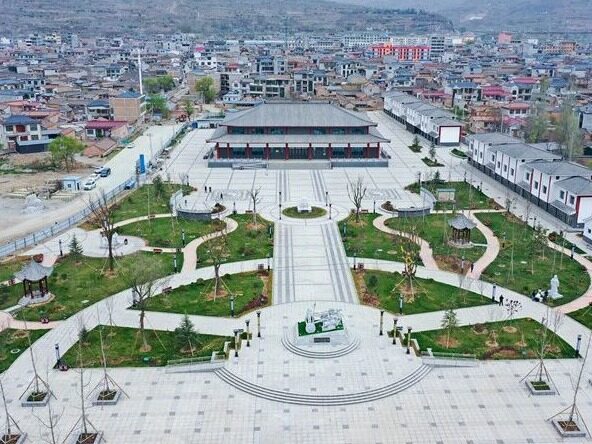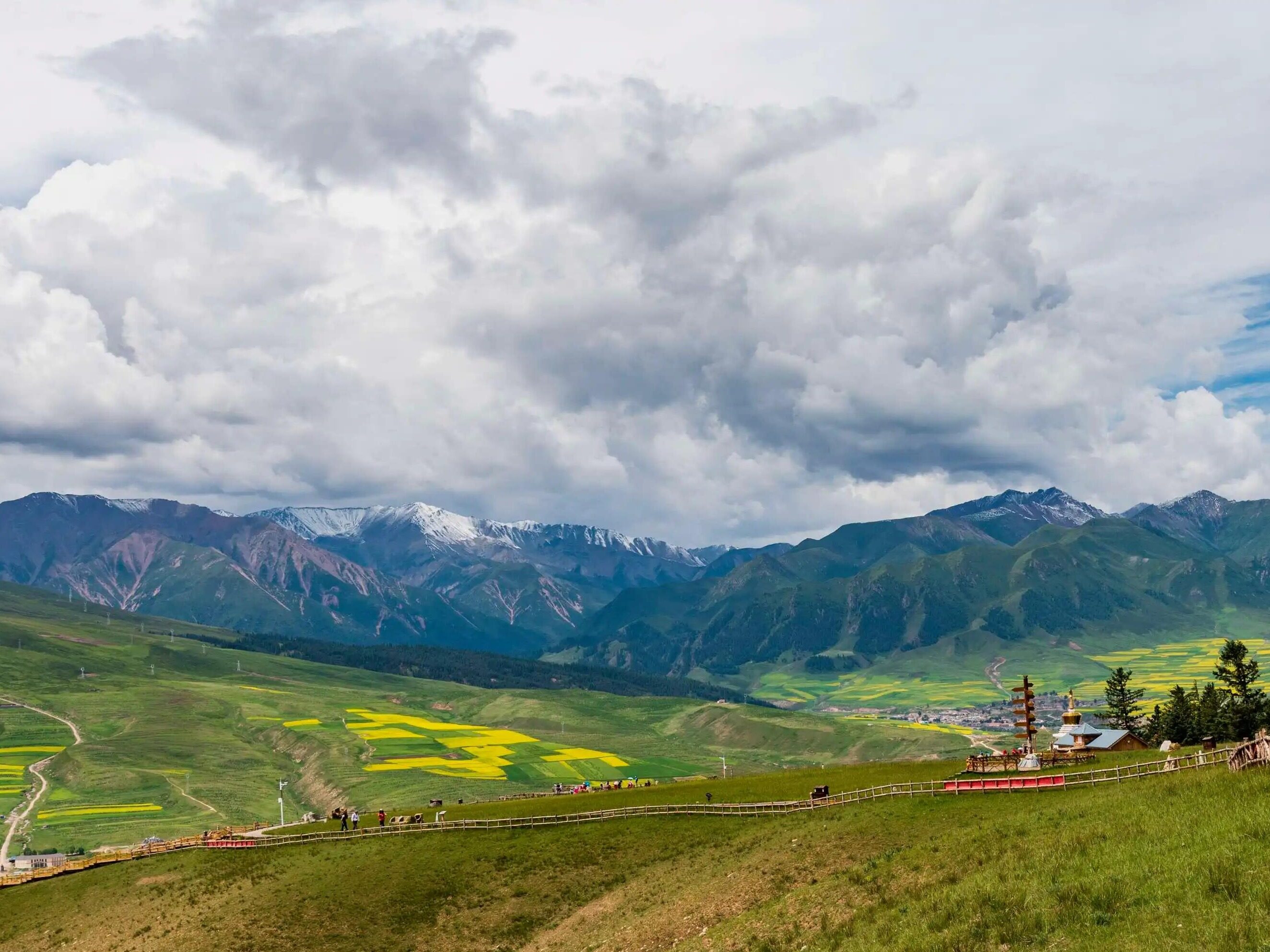- Shaoxing Sanjiang Gate has an important position in the history of hydraulic engineering.

Shaoxing has a history of more than 2500 years, and is known as the hometown of fish and rice. As a water town, bridge town and wine town, water runs through the past, present and future of Shaoxing development. The river is the artery of Shaoxing, the water is the blood of Shaoxing, nourished the Shaoxing people, and witnessed the changes of Vietnam. It can be said that a history of Shaoxing is a history of water control. Without water conservancy, there is no He Yan Haiqing in Shaoxing. During the Jiajing period of the Ming Dynasty, an outstanding eunuch built a great sluice in Shaoxing. The eunuch was called Tang Shao'en, and the famous sluice was called Sanjiangzha. For more than four hundred years, the Sanjiang Gate has blocked the invasion of the tide, so that Shaoxing is no longer affected by the salt tide.
Ming Dynasty Tang Shaoen determined to build a floodgate
The ancient Shanyin, Hueiji, and Xiaoshan counties are low in terrain and carry thousands of miles of water. In the case of torrential rains, flash floods, poor drainage, flooded farm houses, and high water levels in the Qiantang River. In the big flood, the tide is like a row of mountains and rivers, and floods and floods. Countless good fields are reduced to the sea. When the tide recedes, the vast wilderness is left. In order to stop the invasion of the Qiantang sea tide, the ancient working people built sea ponds in the east and north of Xiao and Shao counties. A total of more than 20 sluices were established along the pond. However, due to the rapid tide of the Qiantang River, serious drift sand, and unstable sluice foundation, these water conservancy facilities often fail to function well.

In the 14th year of Jiajing in the Ming Dynasty, when Tang Shao'en served as the prefecture of Shaoxing, the sediment in the Sanjiangkou was very serious, and the internal water could not be leaked. The next year suffered a severe drought, and the fields were harvested without grains. After Tang Shao'en arrived, he was determined to build a floodgate.
Sanjiang sluice water conservancy works in Qianqiu
In the fifteen years of Jiajing, Tang Shaoen personally conducted a site survey of the coastal area and found that the Sanjiang Estuary is the key to the confluence of the inland river and the open sea. But the tide pines here are difficult to construct. He looked deeper into the Sanjiangkou and saw the stony shores in the Rainbow Mountain area, so he dug and explored, and found that there are rock layers underground, which is an ideal natural sluice foundation. After Tang Shaoen grasped the reliable geological data, he decided to break the gates here. A large-scale water conservancy project has begun. The stone was collected from Dayangshan. The project is divided into four parts: foundation, shuttle pier, gate and bridge deck. First, level the rock formation and cut out the tenon and tenon. Then pier the shuttle pier at regular intervals on the rock.

The shuttle pier is built from bottom to top with big stones weighing about a kilogram. The bottom layer is combined with the rock layer, and then the pig iron is perfused, so as not to move due to the impulse of flowing water. Between each big stone on each floor, there is a tenon-and-mortise joint, which is glued with gray screed, and a large shuttle pier is placed every five holes. The most critical places are separated by only three holes, just like the mainstay. At that time, there was a problem. When the masonry was built, the layers of large stones were so cumbersome. How could they be transported and loaded? Someone proposed a way to build a layer of stone and seal it. The higher the boulder, the higher and wider the pile. The mound is sloped so that large rocks can be dragged up. The same method is used for laying the bridge deck. Between the pier and the pier are gate tunnels of varying depths, depending on the natural rock foundation. The deepest is 5.14 meters and the shallowest is 3.40 meters. Inside and outside sills are set on the rock foundation under each sluice tunnel to support the sluice.

The Sanjiang sluice was completed in nine months. The whole sluice has 28 holes and the whole sluice is 108 meters long. A levee is built outside the sluice to form a tidal choke outside and the main river to drain. Since then, the state of water conservancy in the three counties of Hueiji, Shanyin, and Xiaoshan has been changed, which has a great effect on the development of agriculture, fishery, aquaculture, and shipping.

Sanjiang Gate has achieved benefits for more than 400 years
The opening and closing of the Sanjiang Gate is based on water rules. There are two waters, one at the gate site and one at Shaoxing city, the latter has the function of checking the water level. Water is divided into gold, wood, water, fire, and soil. When the water reaches the golden foot, the full gate opens; when the water reaches the wooden foot, there are sixteen holes; when the water reaches the foot, eight holes; to the fire head, the whole gate is closed. The gate is managed by Sanjiang inspection. "Open and close only see the water is the card", usually press the water to urge the gatekeeper to open and close.
After the Sanjiang Gate, it has been repaired for generations and has brought benefits for nearly 450 years. It is still well preserved. Important repairs include the overhaul of Xiaoliang, the servant of the Ministry of the Ming Dynasty in the eleventh year of the Ming Dynasty, and the twenty-one years of renovation in the Kangxi period of the Qing Dynasty. In modern times, the average discharge of the sluice was measured to be 280 cubic meters per second, which made it possible for the two counties in Xiao and Shao to lose 110 mm of rainfall in three days.


More than 400 years later, in the 1980s, 2.5 kilometers downstream of the Sanjiang Sluice, the new Sanjiang Sluice took on the responsibility of blocking the tide and storing light with a huge project scale, and became a hub project that led to the storage and drainage of the water network in the Shaoxing Plain. The history of Shaoxing water conservancy development and even the history of economic and social development is another monument. Sanjiang Gate then completed its brilliant historical mission and became a long-term preservation of historical relics in Zhejiang Province. Editor / Zhao Yongjing
Comment
 Praise
Praise
 Collect
Collect
 Comment
Comment
 Search
Search














Write something~